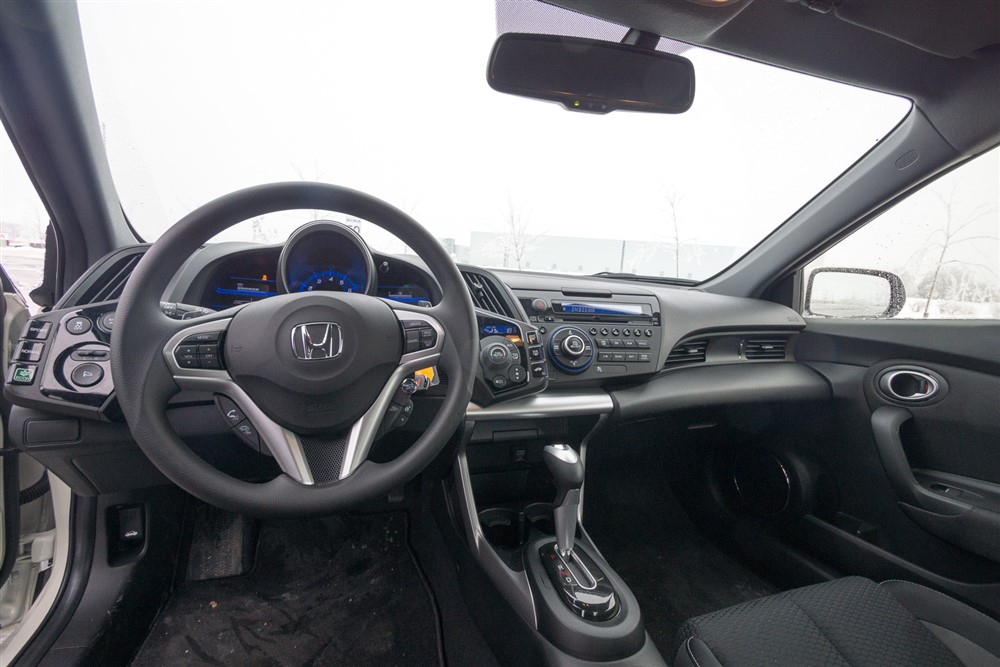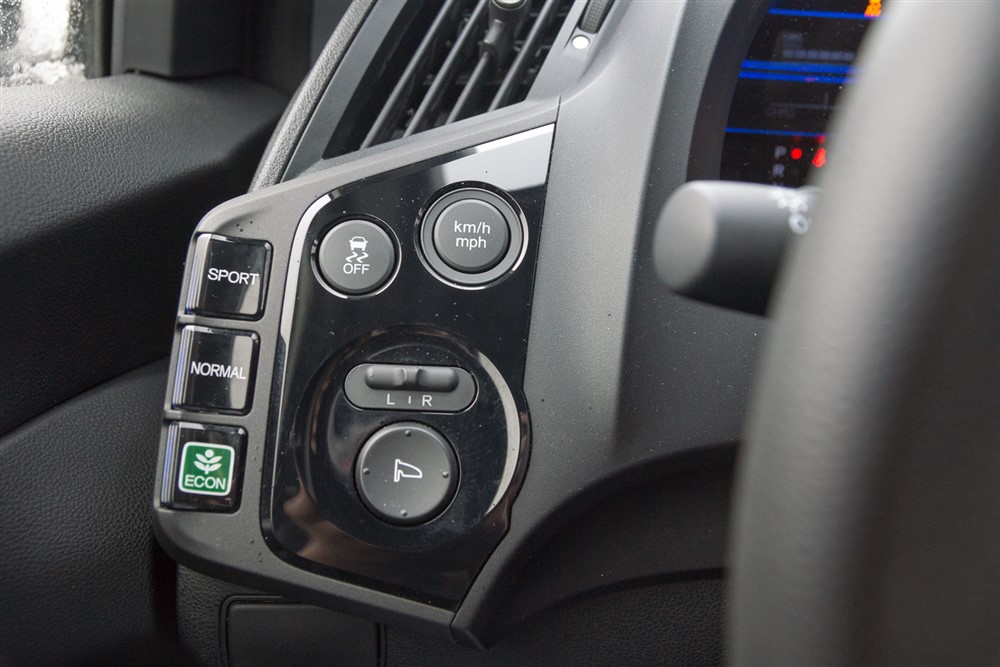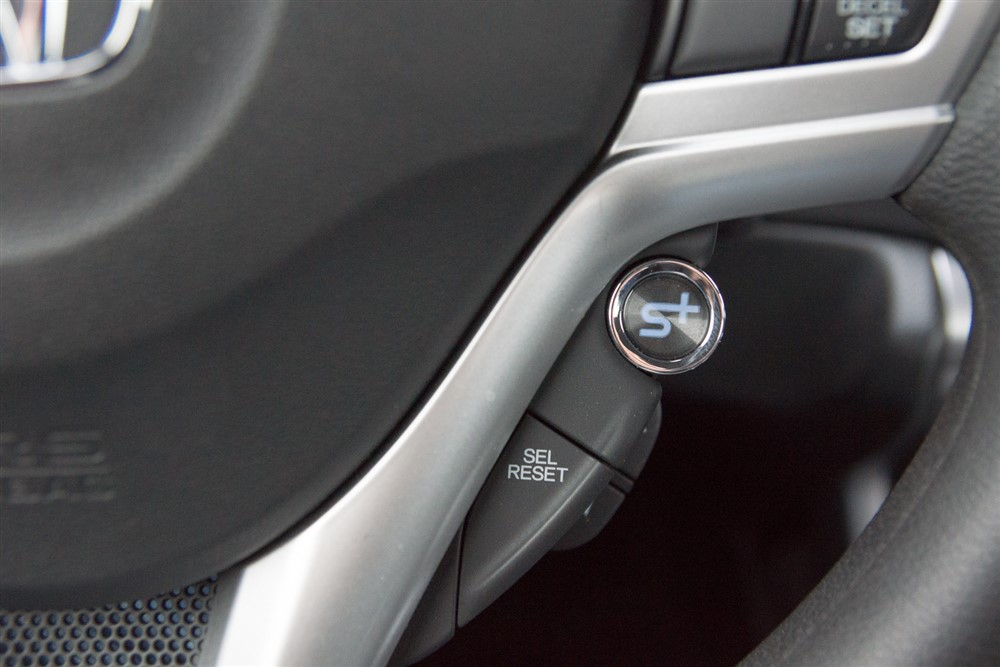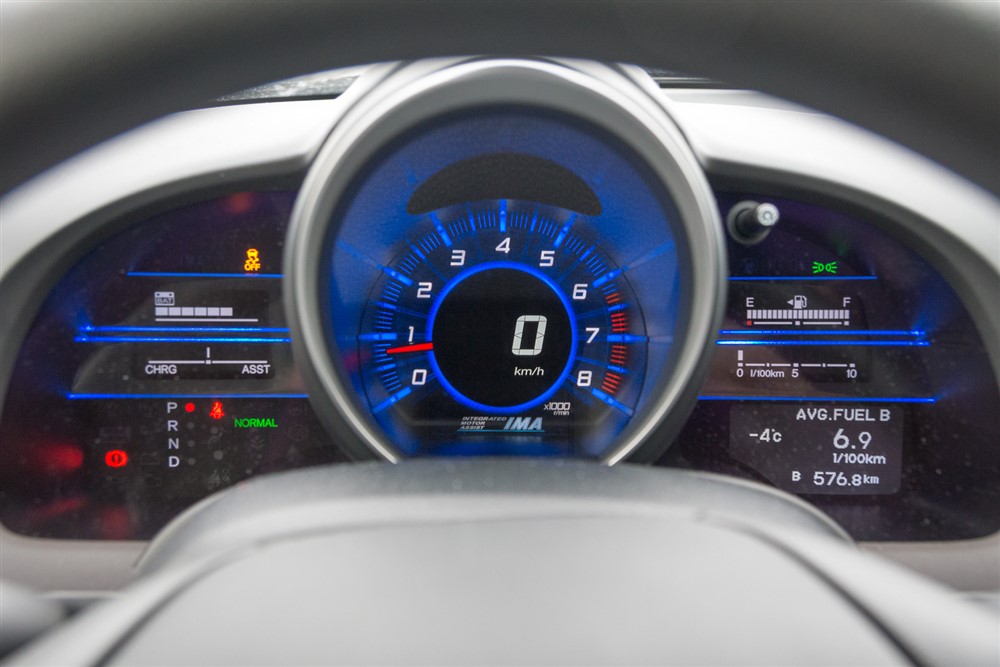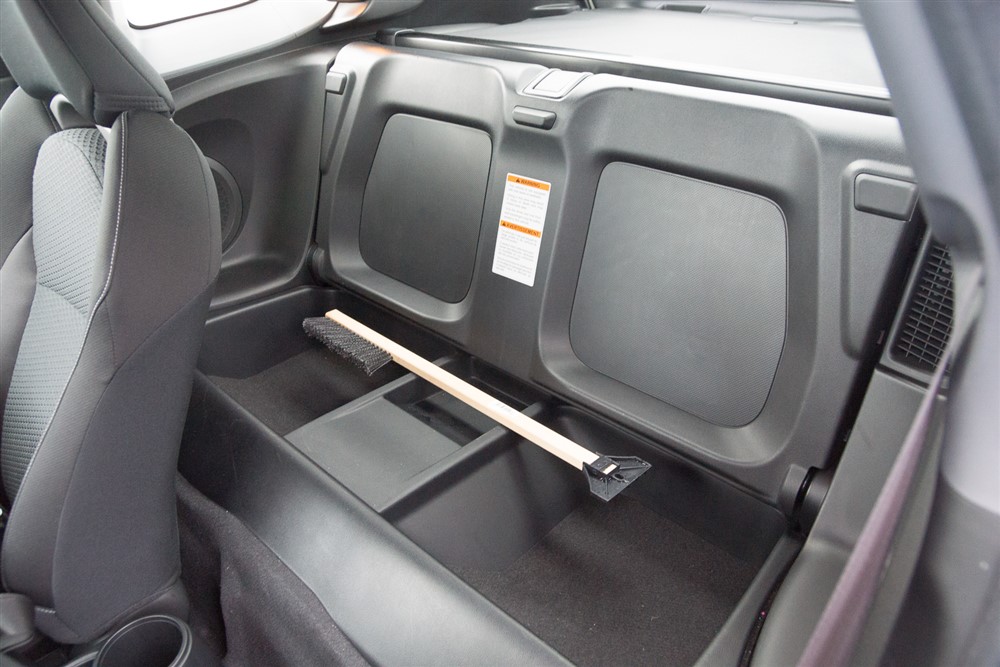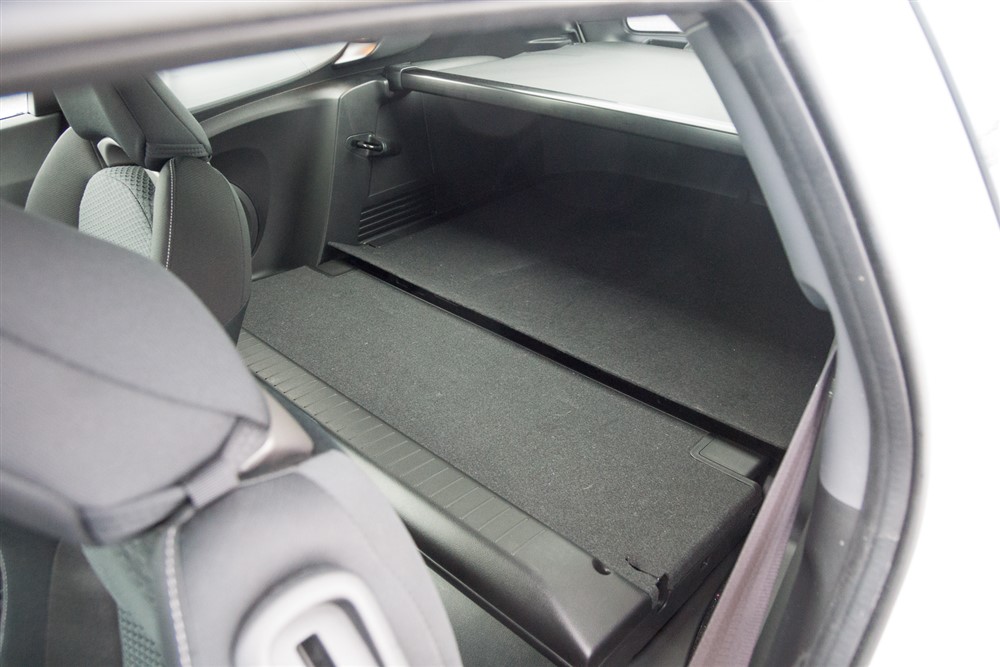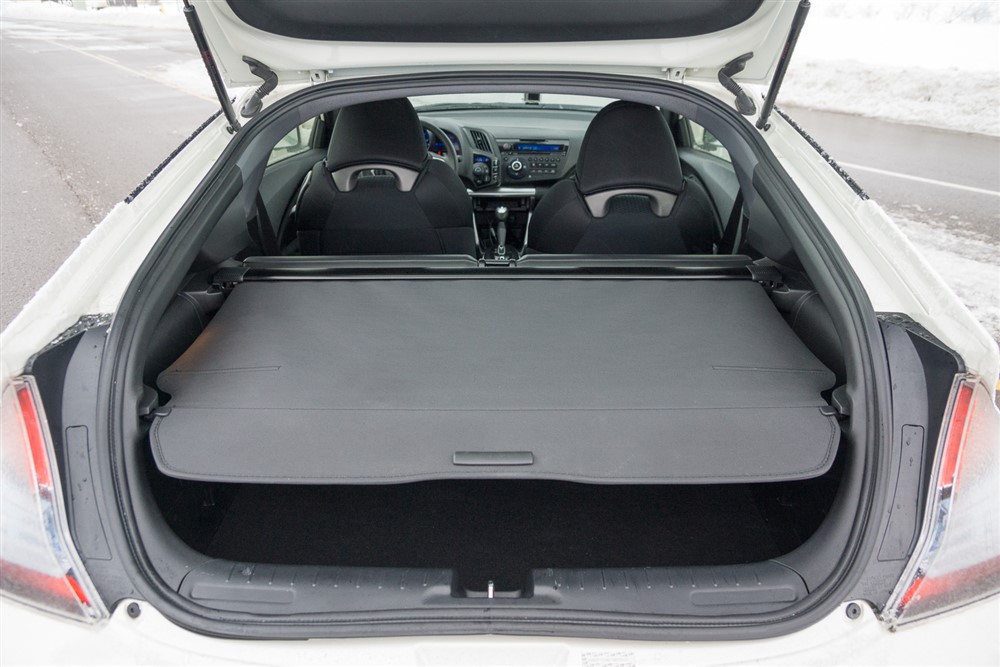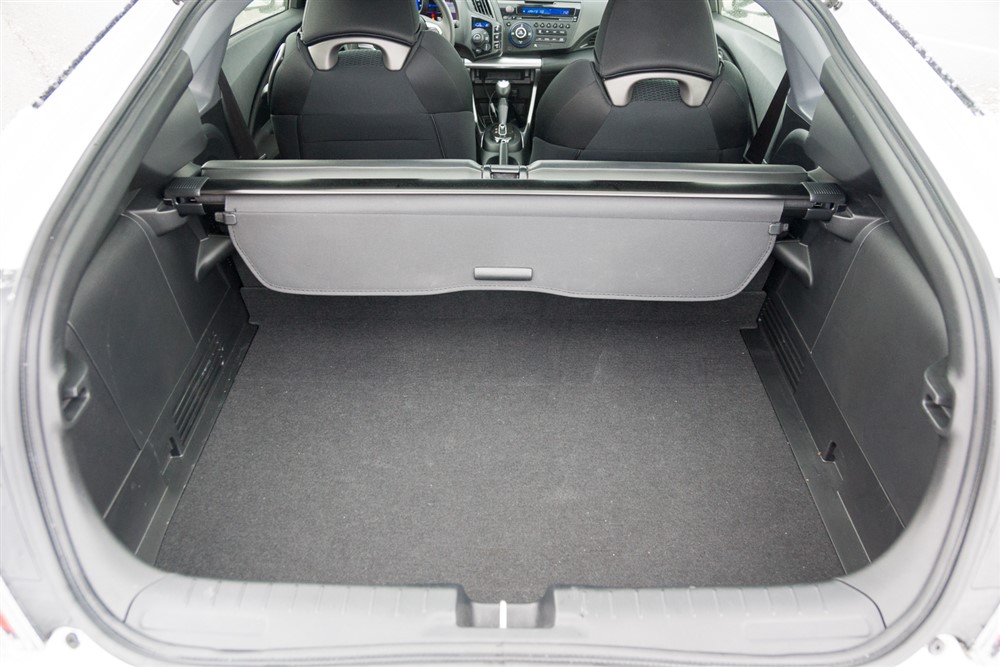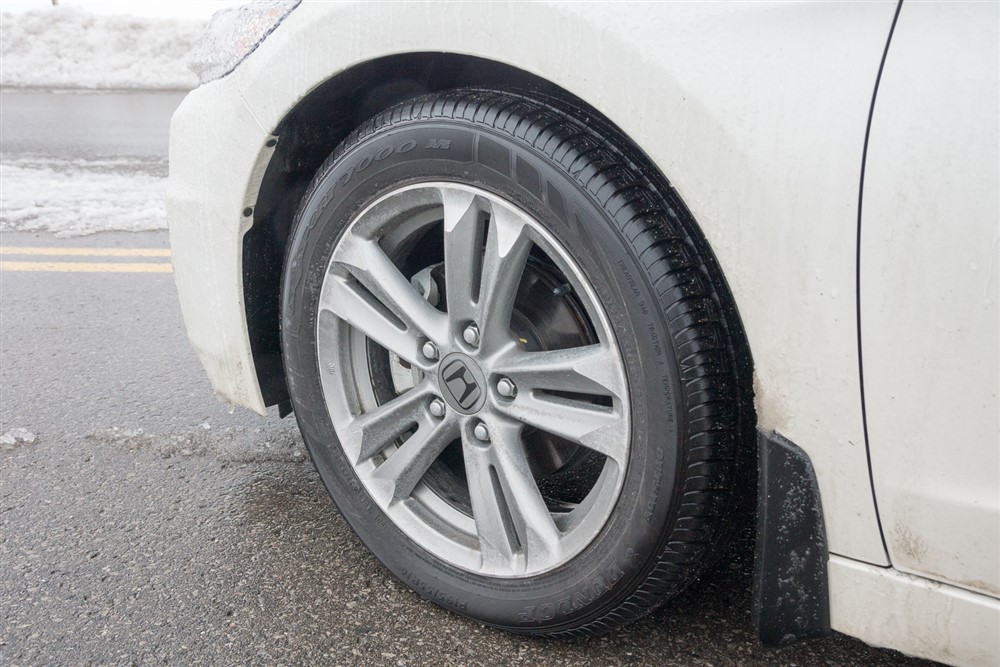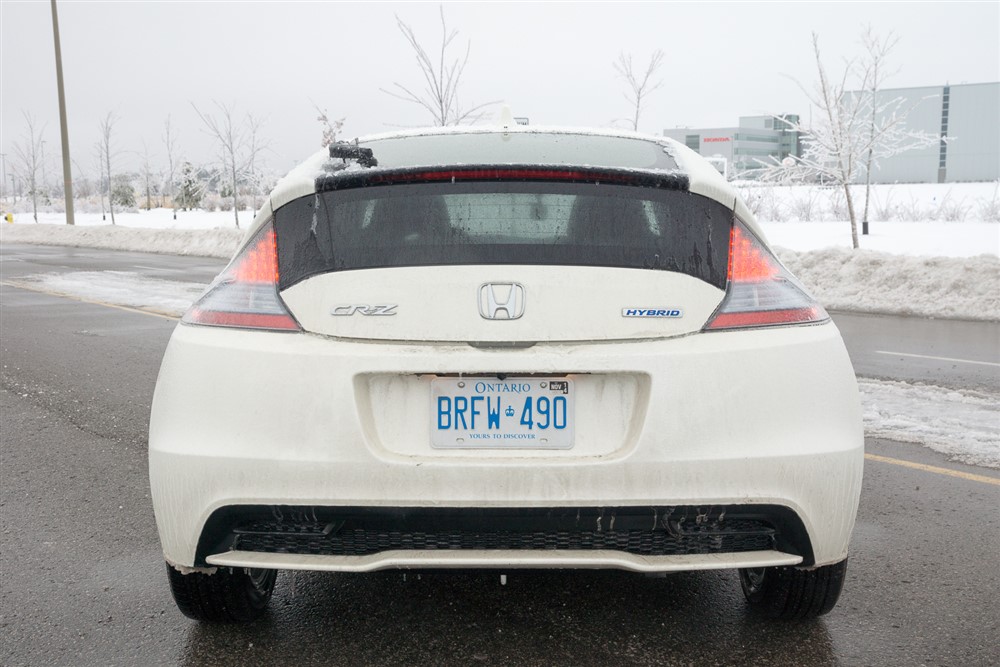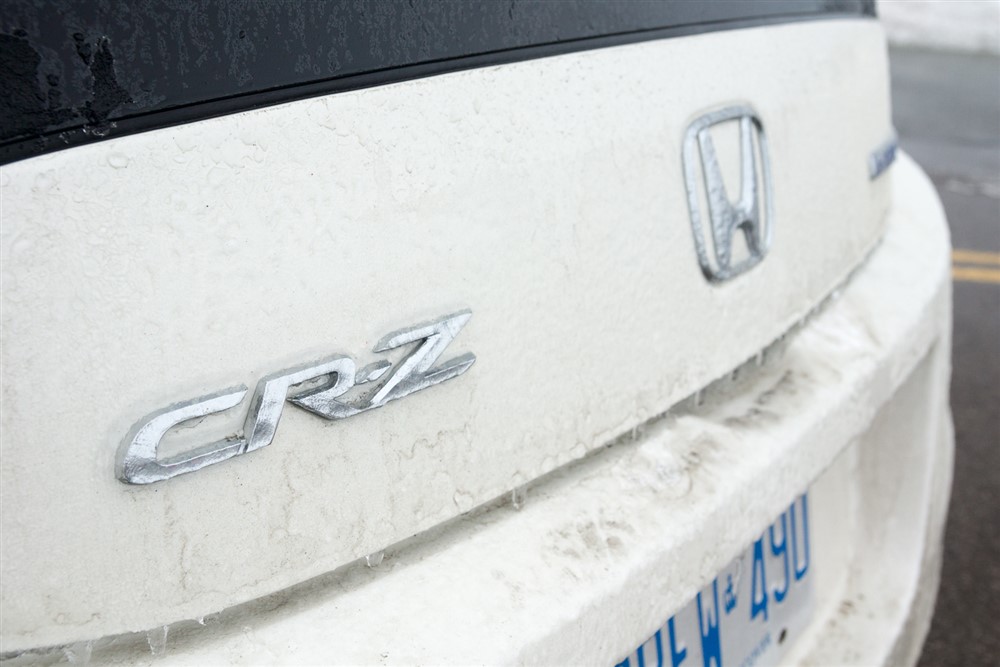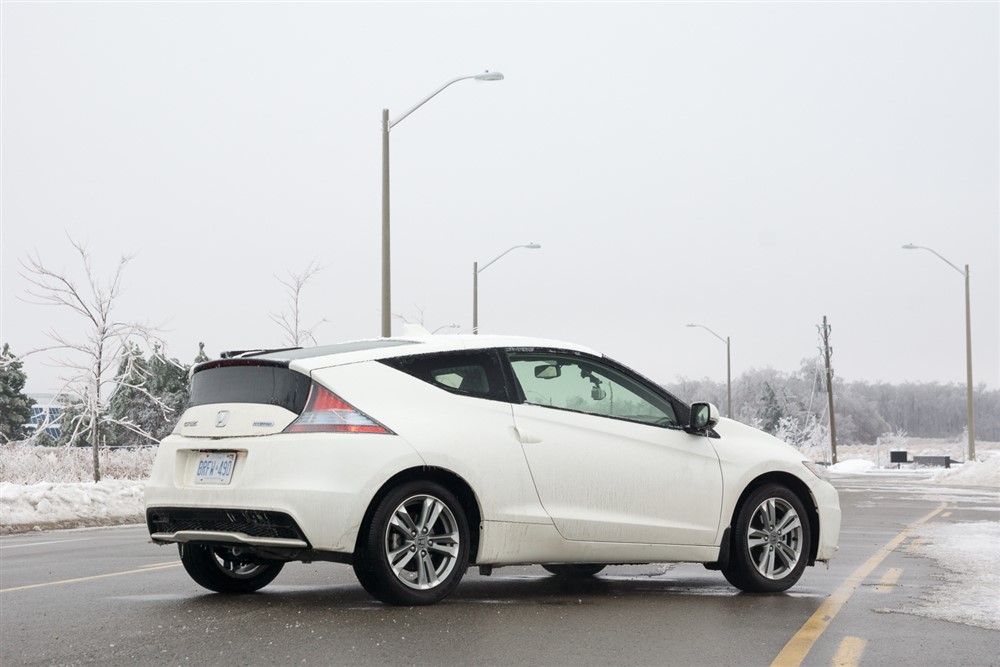The old Honda CR-X has built up a very favourable following over the years. Seen in 1983, it represented Honda’s very best in terms of light weight, excellent handling, and surprising fuel efficiency. The second-generation CR-X from 1988 to 1991 is my personal favourite – with good suspension geometry, modern powertrains (for its time), and a high fun-to-dollar ratio. These cars are still in demand, twenty years later, thanks to all these characteristics. When Honda started to hint at a successor, a lot of ears perked up, and people anxiously awaited more details. Could Honda bring back the same mojo and excellence of the 1990s that internet forum enthusiasts often hark back to?
Simply being named the CR-Z means it will draw direct comparisons to its predecessors. As details were released, it became apparent that the CR-Z would be made up from a similar formula to the CR-X, but with a modern twist. While the low-slung, two-door, two-seat fastback shape more or less remained, it is the hardware under its skin that would become the defining feature of Honda’s (somewhat) retro-styled subcompact. When Honda announced that the CR-Z powertrain would only be available in a hybrid electric configuration, I think a lot of people (including myself) quietly expressed their disappointment. Whether these feelings are justified is still up for discussion. Honda handed me the keys to a “Premium White Pearl” CR-Z with the continuously variable transmission.
Before picking up my test car, I was really hoping that it would be a manual transmission model, as Honda proudly touts the CR-Z as being the only hybrid electric vehicle available with three pedals. Nonetheless, my CR-Z, while not the loaded Premium model, comes with most features people would expect. Power windows and door locks, Bluetooth mobile phone integration , automatic climate control, and a rear-view backup camera, among a few other items. The only feature I would have liked is heated side mirrors – Toronto was subjected to a rough ice storm recently, and having the mirrors constantly ice up was a little annoying. Stepping up to the Premium model would have made this a non-issue, but having to pay for a feature that could potentially affect the driver’s safe operation of the car is not always good news.
Unlike the old CR-X, the new CR-Z is a car you sit in. The side sills are high and the windows are short. While it is easy to settle into a good driving position, what I couldn’t get used to is the lack of visibility in nearly all directions other than what you see in front of you. Blind spots are massive as the rear quarter windows don’t do much in the way of letting light through, and the horizontal bar across your rearward view cuts off a lot of the headlights and turn-signals you usually need to be able to see. Like I said earlier, the lack of heated side mirrors hurts overall visibility even more so. Driving this car and placing it in the confines of busy city traffic takes some getting used to, though a rear-view backup camera helps when you’re parallel parking.
Behind the driver is a cargo shelf with two depressions scalloped out that almost look like seats, but there are no accompanying seat belts. Fortunately, what would be the seat back can fold down, extending the cargo area. While the CR-Z is no wagon, this option does open up opportunities for quick runs to your favourite flat-pack Swedish furniture store.
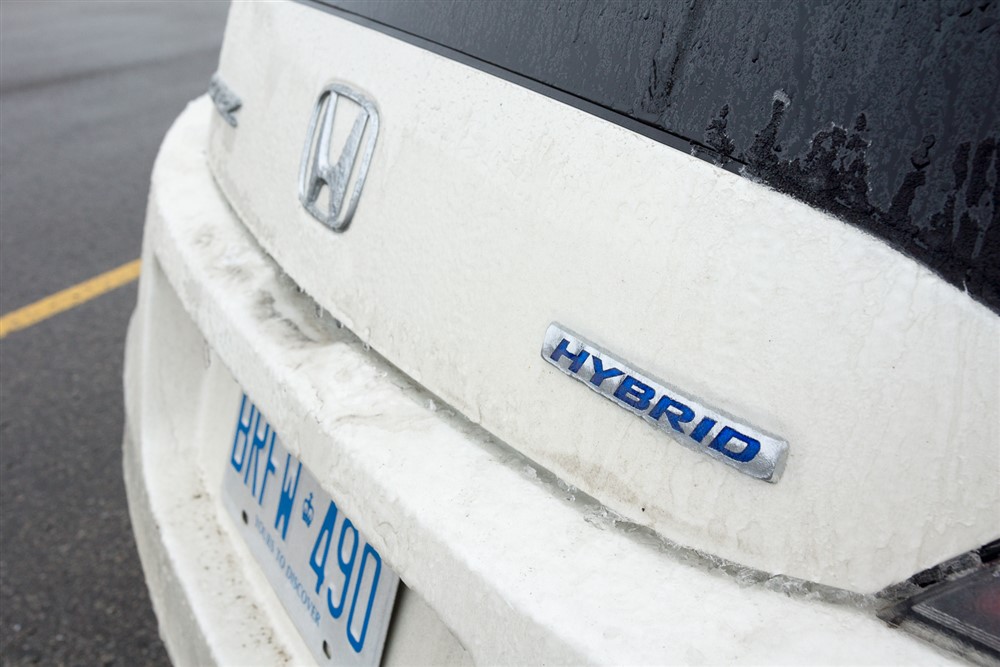
Under the hood of CR-Z is a 1.5L four-cylinder gasoline engine combined with Honda’s Integrated Motor Assist (IMA) system. Together, they produce a total of 130hp at 6000rpm and 127lb-ft of torque in the 1000-2000rpm range. The manual transmission CR-Z produces slightly more torque. This is not a dedicated parallel electric hybrid system that can propel the car under battery power alone, but rather a configuration that sees the electric motor sandwiched between the engine and transmission. This means the gasoline engine must be running at all times. There is an idle start-stop function that shuts off the engine at stop lights. The biggest impact Honda’s IMA system has on the CR-Z’s drivability is the low-end torque. A typical 1.5L four-cylinder engine alone typically needs to be revved high up before any real usable power can be extracted. The IMA system provides a useful push to the gasoline engine’s output – With a trained foot and an understanding of the CVT, it is easily possible to get up to city street speeds while keeping the revs under 2000rpm. This has the benefit of improving fuel efficiency and decreasing noise output since you’re not revving the motor to the stratosphere.
The CR-Z features three driving “modes” that adjust a multitude of settings depending on your needs. The normal mode is exactly that – normal. The Econ mode dulls the throttle and scales back air-conditioning use to help squeeze out the most from a litre of fuel. The Sport mode changes the instrument cluster gauge backlighting to red, and increases throttle sensitivity. The gas engine is more eager to rev into the upper rev range, making for much better highway passing power. There’s also a button on the steering wheel marked S+. When at speed, pressing this button provides you with a five-second boost in acceleration. In practice, it behaves similarly to having the CR-Z in Sport mode. I would have liked to see the battery used more aggressively – even under spirited driving in the city, the battery capacity gauge would only go down two or three ticks, out of a total of eight. What if more electrical assist could be provided at the cost of slightly quicker depletion? That’s a trade-off I’d be willing to make.
Honda Canada rates the CR-Z at 5.4L/100km in the city, 5.0L/100km on the highway, and 5.2L/100km in a combined cycle. I spent most of my time in Normal mode during my commutes into the downtown core. Over the span of about 500km, I managed an average of 6.8L/100km over the course of a week. This is considerably higher than Honda Canada’s estimates, but my numbers are in line with what Honda America estimates. The same thing happened with the Honda Accord Plug-In Hybrid I tested earlier this year – my numbers were a dead ringer for the American estimated numbers. It comes down to the terrible weather we’ve been seeing lately, and the fact that my driving habits are much closer to the American cycle of fuel efficiency testing.
What’s slightly disheartening is the mere existence of the Honda Fit. I tested one earlier in the spring, and managed to squeeze out some very similar fuel efficiency numbers, without the help of any hybrid electric technologies. While the two models are aimed at different target markets, the Fit brings classic fun-to-drive utility and comparable efficiency, complete with a lower as-tested price. It doesn’t even look half bad in the Sport trim. Perhaps Honda was not in a position to offer the CR-Z in a non-hybrid format (remember the recession of 2008?), but one can only wish. A lighter, simpler, and cheaper CR-Z with the standard 1.5L engine alone probably would have generated a lot more excitement, and would have likely returned competitive fuel efficiency ratings. This doesn’t mean the CR-Z the world ended up getting is a bad car by any means, but with the wealth of information available everywhere, and expectations set by the CR-X predecessor, anything Honda released would have had some big shoes to fill. What the CR-Z is, is a stylish city car that pays homage to the original CR-X while packing it full of (mostly) effective powertrain technology. If I had to have one, the six-speed version would be absolutely mandatory, because that’s how a Honda should be.
2013 Honda CR-Z Gallery


